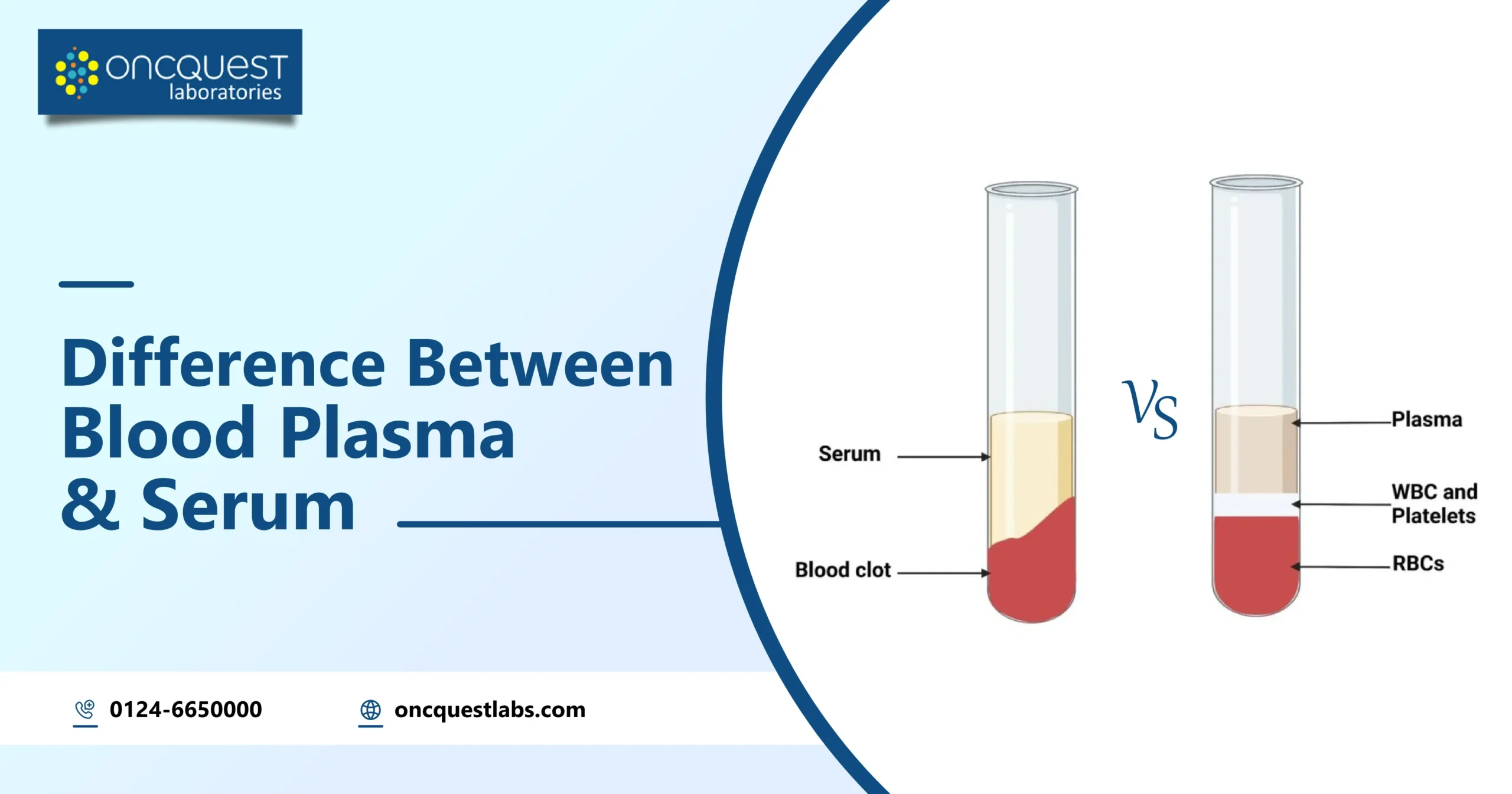Blood, the life-sustaining fluid coursing through our veins, is a complex concoction of cells, proteins, and various substances that play pivotal roles in maintaining bodily functions. Among the components of blood, plasma and serum are two distinct yet closely related entities that serve crucial purposes in the realm of medical diagnostics and research. In this comprehensive exploration, we delve into the differences between blood plasma and serum, shedding light on their unique characteristics, functions, and significance.
Contents
- 1 Blood Composition and Basics
- 2 Blood Plasma: A Closer Look:
- 3 Blood Serum: The Aftermath of Clotting:
- 4 Clinical Significance
- 5 Storage and Stability
- 6 Applications in Research
- 7 Therapeutic Applications
- 8 Specialized Plasma and Serum Fractions
- 9 Evolving Technologies and Techniques
- 10 Challenges and Considerations
- 11 Future Directions
Blood Composition and Basics
Before delving into the distinctions between plasma and serum, it is essential to understand the fundamental components of blood. Blood is composed of red and white blood cells, platelets, and plasma. Plasma, accounting for about 55% of blood volume, is a yellowish fluid primarily consisting of water, electrolytes, proteins, hormones, and waste products. The remaining 45% is cellular components, namely red and white blood cells, and platelets.
Blood Plasma: A Closer Look:
Blood plasma is the liquid component of blood that remains after blood clotting has occurred. It is a yellowish fluid comprising approximately 92% water and 8% solutes, including proteins, electrolytes, hormones, waste products, and nutrients. The key proteins found in plasma are albumin, globulins, and fibrinogen, each playing distinct roles in maintaining homeostasis, transporting substances, and clotting.
Albumin: Albumin is the most abundant protein in blood plasma, constituting roughly 60% of the total plasma proteins. It functions as a carrier molecule, transporting various substances such as hormones, fatty acids, and drugs. Additionally, albumin contributes to the maintenance of blood viscosity and osmotic pressure.
Globulins: Globulins encompass a diverse group of proteins that can be further classified into alpha, beta, and gamma globulins. Alpha and beta globulins are involved in transporting lipids, metal ions, and fat-soluble vitamins. Meanwhile, gamma globulins, also known as immunoglobulins or antibodies, play a vital role in the immune response by recognizing and neutralizing pathogens.
Fibrinogen: Fibrinogen, comprising around 4% of plasma proteins, is crucial for blood clotting. When a blood vessel is injured, fibrinogen is converted into fibrin threads, forming a mesh that helps in the clotting process. This ensures the prevention of excessive bleeding.
Blood Serum: The Aftermath of Clotting:
While blood plasma serves as the liquid medium for transporting cells and substances throughout the body, serum is what remains when blood coagulates or clots. The process of clotting removes fibrinogen and other clotting factors, leaving a fluid composed mainly of water, electrolytes, and proteins – minus the clotting factors. In essence, serum is plasma without clotting factors.
Composition of Serum: The composition of serum closely mirrors that of plasma, excluding clotting factors. Serum contains water, electrolytes, proteins, hormones, nutrients, and waste products. Notably, it lacks fibrinogen, the protein central to the blood clotting cascade.
Collection and Processing: The methods of collecting blood plasma and serum differ, impacting the analytical applications of each. When obtaining plasma, blood is collected into an anticoagulant-containing tube to prevent clotting. Anticoagulants such as ethylenediaminetetraacetic acid (EDTA), heparin, or citrate are commonly used. The anticoagulated blood is then centrifuged to separate the plasma from cellular components.
In contrast, serum is collected by allowing blood to clot before centrifugation. The clotting process results in the formation of a gel-like substance, which is then separated from the liquid serum. Commonly used clot activators include silica particles or substances like thrombin.
Clinical Significance
Both blood plasma and serum have critical roles in diagnostic medicine and research, providing valuable information about an individual’s health and underlying conditions.
Plasma in Hemostasis and Coagulation Studies: Plasma is indispensable in studying hemostasis and coagulation. By analyzing plasma, healthcare professionals can assess the integrity of the clotting system, identify clotting disorders, and monitor the effectiveness of anticoagulant therapies. The levels of clotting factors and fibrinogen in plasma serve as essential indicators in these investigations.
Serum in Diagnostic Testing: Serum is widely utilized in diagnostic testing, as it reflects the body’s physiological state without interference from anticoagulants. Common serum tests include assessing liver function (using enzymes like alanine transaminase and aspartate transaminase), kidney function (creatinine and blood urea nitrogen), and cardiac markers (troponins and creatine kinase-MB) to aid in the diagnosis and monitoring of various diseases.
Storage and Stability
Another differentiating factor between blood plasma and serum is their storage and stability. Plasma, owing to the presence of anticoagulants, needs to be processed and frozen promptly to prevent degradation of labile proteins and maintain the integrity of analytes. On the other hand, serum can be stored at room temperature for a longer duration, simplifying sample handling and transportation logistics.
Applications in Research
Both blood plasma and serum find extensive applications in medical research. Plasma is often used to investigate the concentration of various substances like hormones, nutrients, and drugs. Researchers also explore the proteomic profile of plasma to identify biomarkers associated with diseases. Meanwhile, serum is valuable in immunological studies, particularly in analyzing antibodies and antigens, aiding the understanding of the immune response.
Therapeutic Applications
Beyond their roles in diagnostics and research, both blood plasma and serum have therapeutic applications that contribute to medical advancements. Plasma, for instance, is a source of clotting factors and immunoglobulins, making it invaluable in treating conditions such as hemophilia and certain immune deficiencies. Plasma donations from healthy individuals are processed to extract specific components, which are then administered to patients lacking these factors.
Serum, although less commonly used therapeutically, can be employed in specific situations. Autologous serum, derived from a patient’s own blood, has been explored for its potential in treating ocular surface disorders, including dry eye syndrome. The serum’s growth factors and anti-inflammatory components may offer therapeutic benefits in such cases.
Specialized Plasma and Serum Fractions
Within the realms of plasma and serum, specialized fractions further distinguish these components, each with its unique properties and applications.
Cryoprecipitate from Plasma: Cryoprecipitate is a component derived from plasma that precipitates when frozen and then thawed. It is rich in fibrinogen, factor VIII, von Willebrand factor, and fibronectin. Clinically, cryoprecipitate is often used to treat bleeding disorders, particularly hemophilia and von Willebrand disease.
Fibrinolytic Activity in Serum: Serum, lacking clotting factors, is the primary medium for assessing fibrinolytic activity. This involves the breakdown of blood clots, and abnormal levels can indicate various pathological conditions. Studying serum fibrinolytic activity contributes to our understanding of thrombotic disorders and guides therapeutic interventions.
Evolving Technologies and Techniques
Advancements in technology continually refine the analysis of blood plasma and serum. High-throughput techniques, such as proteomics and metabolomics, enable researchers to scrutinize these components at a molecular level, uncovering intricate details about health and disease. Moreover, emerging technologies like microfluidics and point-of-care devices enhance the speed and accessibility of diagnostic testing, further expanding the practical applications of plasma and serum analysis.
Challenges and Considerations
While blood plasma and serum are invaluable resources in medical practice, certain challenges and considerations warrant attention. Variability in collection methods, storage conditions, and processing techniques can influence the results of diagnostic tests. Standardization efforts within the healthcare industry aim to address these challenges, ensuring consistency and reliability in the interpretation of plasma and serum data.
Additionally, the ethical implications of utilizing these blood components, particularly in research involving human subjects, require careful consideration. Informed consent, privacy protection, and adherence to ethical guidelines are paramount to maintaining the integrity of studies involving blood plasma and serum.
Future Directions
As research and technology progress, the study of blood plasma and serum will likely continue to unveil new insights into human health and disease. The integration of artificial intelligence, machine learning, and big data analytics promises to enhance our ability to interpret complex patterns within these components, leading to more personalized and precise diagnostics and therapeutics.
Collaborations between scientists, healthcare professionals, and technology experts will be instrumental in harnessing the full potential of blood plasma and serum in advancing medical knowledge and improving patient care. Whether in the development of innovative therapies or the identification of novel biomarkers, the future of plasma and serum research holds great promise for transforming the landscape of medicine.
Conclusion
In conclusion, while blood plasma and serum may appear similar at first glance, their distinctions play pivotal roles in the fields of medicine and research. Understanding the differences in composition, collection, processing, and applications is crucial for healthcare professionals, researchers, and diagnostic laboratories alike. As technology advances and our understanding of the human body deepens, the unique characteristics of blood plasma and serum continue to contribute significantly to the ever-evolving landscape of medical science.
In this in-depth exploration of blood plasma and serum, we’ve navigated through their composition, functions, collection methods, clinical applications, and evolving roles in research and therapy. The nuanced differences between these two components underscore their significance in healthcare and scientific endeavors.
Blood plasma, with its clotting factors and rich protein content, provides a comprehensive overview of the body’s physiological state, particularly in terms of coagulation and immune response. Serum, devoid of clotting factors, is a valuable medium for diagnostic testing, offering insights into organ function, enzymatic activity, and various disease markers.
As our understanding of the intricacies of blood plasma and serum deepens, so does our ability to unlock new possibilities in medicine. These components, once seen simply as byproducts of blood, have emerged as indispensable tools in diagnosing diseases, guiding therapeutic interventions, and advancing our knowledge of the complexities of human biology. As we stand on the cusp of unprecedented technological advancements, the journey of exploration into the world of blood plasma and serum promises to be both exciting and transformative for the future of healthcare.





